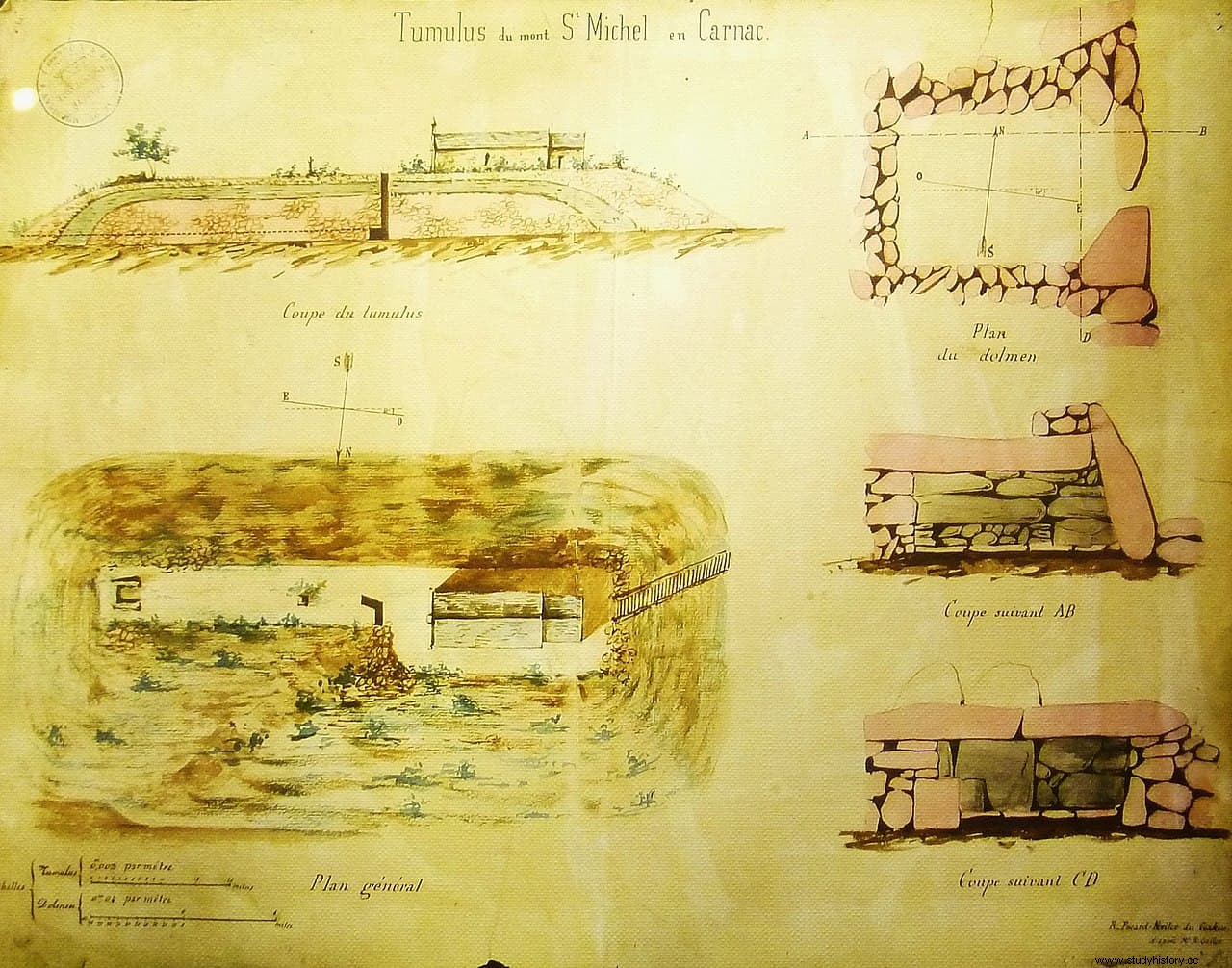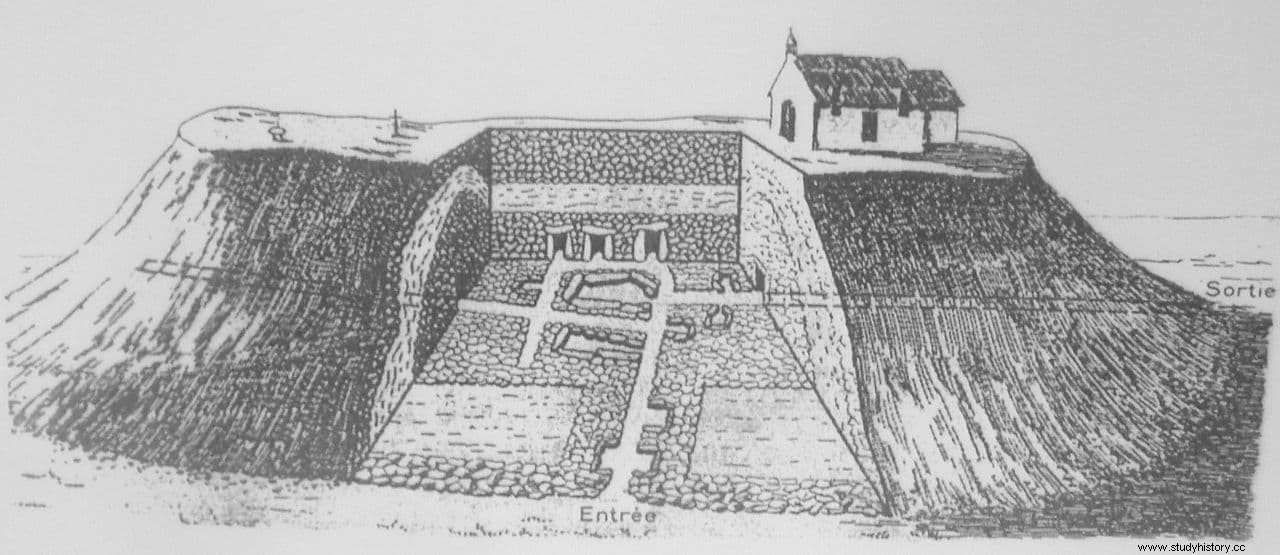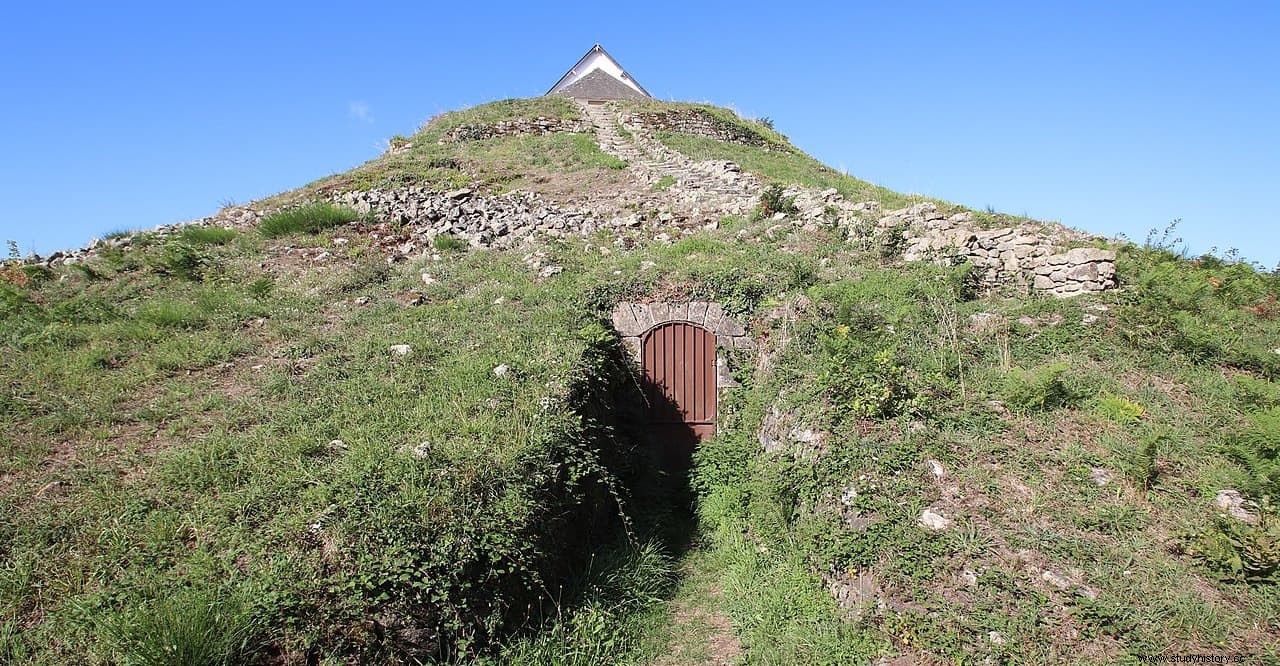The French commune of Carnac, in the Morbihan department on the northwestern coast of France, is famous for its alignments of menhirs, accounting for almost 3,000 of these megaliths that were raised during the Neolithic between 6,000 and 2,000 BC.
But the area is also home to another prehistoric structure, at first sight not as spectacular as the alignments but from an archaeological point of view just as impressive. It is the Saint-Michel tumulus.
Neolithic burial mounds are funerary structures erected during prehistory and found practically all over the world. They consist of mounds of earth and stones created on one or several tombs, and their size varies from a few meters to large dimensions, such as that of Saint-Michel, which is the largest burial mound in continental Europe (the largest in all of Europe if we take into account the fact that Silbury Hill may not be a burial mound).

It is 125 meters long by 50 meters wide and reaches a height of 10 meters. The upper platform has a length of 75 meters. It has an oval and stretched stone core called galgal , on which is spread a thick layer of clay and another of stones that forms the surface, like a shell. The total volume of the tumulus reaches 30,000 cubic meters.
It was explored for the first time between 1862 and 1864 by René Galles, accessing through vertical wells, finding a central chamber closed on all sides, 2.4 by 1.4 meters on each side and 0.9 meters high. The walls are made of cyclopean type dry masonry, supporting a large slab as a roof.

This chamber contained 39 polished jadeite and fibrolite axes stuck in the ground with the blades pointing upwards, a necklace with 97 pearls and 10 variscite pendants. On the flat stones of the floor were the remains of burned human bones. Around it were 13 small stone chests containing remains of animal bones, some burned and others not.
At the beginning of the 20th century, between 1900 and 1907, the archaeologist Zacharie Le Rouzic resumed the excavations and discovered a second chamber, smaller and with an antechamber, located to the south of the main one, and in which there were another fifteen small stone chests. All the chambers are surrounded by a circular wall that ends in a false vault.

More recent investigations excavated a transverse and a longitudinal gallery through the burial mound. Thus, they found another chamber on the eastern side with access from the north, whose roof is made up of four large stone plates supported by another eight vertical stones.
The floor of this chamber is paved with pebbles. Two clay vessels, a small bronze bell (from the Hallstatt period) and charcoal were found in it, indicating that it is a later burial than the other chambers.

From the complexity of the structure, experts deduce that it could have been the burial mound of a princely elite, built around 5000 BC. in several stages but in a fairly short period of time.
At the top of the tumulus there is a chapel dedicated to Saint Michael the Archangel built in the 17th century and rebuilt in 1927.
